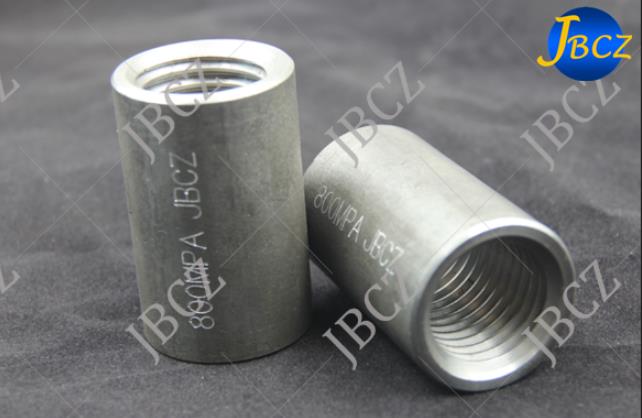The straight threads allow the rebar coupler and the relative position of the wire head to be adjusted. In contrast, the exposed threads allow the relative position of the two connected rebar ends to be determined and guaranteed. In standard fillet processing, the end face of the rebar is required to be flat and perpendicular to the axis of the rebar so that the end faces of the two connected bars can be realized in the center of the rebar coupler.

The pushing force caused by the top of the reinforcement is in the same direction as the pushing force through the threaded bite after the reinforcement has been stressed. Therefore, the gap caused by the negative tolerance of the thread fit between the screw head and the rebar coupler can be eliminated. The gap is a phenomenon that is difficult to avoid in general threaded fits. As long as the thread can be screwed in, there is bound to be a gap (negative tolerance). The thread gap is the earliest inelastic deformation formed after the force is applied. From the macroscopic point of view, this means that the stiffness is metamorphosed (the modulus of the cut thread is reduced) and causes residual deformation. Now the rolled straight threaded connection can reduce this gap by buttressing the end of the connected reinforcement, which is undoubtedly very beneficial to improve the force transmission performance of the joint. This is why the stiffness metamorphosis of the rolled straight threaded joint is relatively small (less reduction of the cut line modulus and less inelastic deformation), and the residual deformation is also small. This action is similar to the action of prestressing in concrete structures.
Of course, excessive buttressing forces can cause "self-locking" of the threads, which in turn causes self-locking internal stresses in the reinforcement joints and fillets, putting additional stresses on the thread bite teeth that transmit tension. If left unchecked, this can lead to a fracture of the rebar coupler or "backing out" of the threads. Torque wrenches allow the tightening to be effectively controlled by controlling the value of the tightening torque so that the counterforce is not too great.
The standard preparation team conducted systematic experimental research to explore the effect of tightening torque on the joint's tensile strength and residual deformation. Based on the comprehensive analysis, the suitable tightening torque was determined for different diameters of steel bars.
Higher tightening torque should be achieved for thicker diameters, which is required to eliminate the mating gap. However, excessive tightening torque will reduce the load-bearing capacity of the joint and should be controlled during construction. When different diameters of reinforcement are connected (Y for reducer type connection), the tightening torque is taken as the corresponding value for the smaller diameter reinforcement because the value of force transfer between two different diameters depends on the smaller diameter reinforcement.
The above is the knowledge about how to ensure the quality of rebar couplers. If you need more detailed information, welcome to contact us!